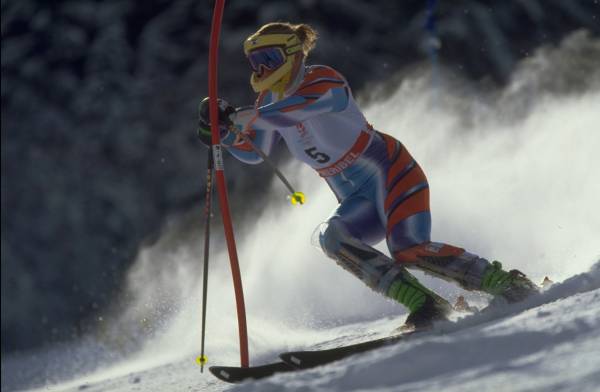Alpine skiing is one of the most physically demanding sports in the Winter Olympic programme, which is arguably reflected in the fact that in the entire history of Alpine skiing at the Winter Games, only five athletes have successfully defended their Olympic crowns across all events in the competition.
So if history is any indicator, we should be seeing plenty of new champions (and first-time medalists) on the Alpine podiums. Of course, that doesn't mean the established stars and veterans of the sport should be overlooked - far from it.
Men's and women's alpine skiing both debuted on the Olympic programme in 1936 at Garmisch-Partenkirchen. The only event that year was a combined competition of both downhill and slalom. In 1948, this was held along with separate downhill and slalom races. Four years later the giant slalom was added and in 1988 the super giant slalom became a fourth separate event.
Olympic Competition
The Alpine competition features 11 events for both Men & Women:
- Downhill
- Super-G
- Giant Slalom
- Slalom
- Alpine Combined
- Mixed Team
Competitors get one run to post their fastest time in the downhill and super-G events, while the slalom and giant slalom competitions take place over two courses. Competitors who do not finish or are disqualified from their run on the first course do not advance to the second course.
The cumulative time from an athlete's runs on both courses is used to determine the winner of the events. In the Alpine combined, skiers participate in one run of downhill and one run of slalom on different courses from those used in the downhill and slalom competitions. Like the slalom and giant slalom, only competitors who complete a successful run on the downhill portion advance to the slalom run. The times of the two runs are combined to determine final placements.
In the mixed team event, teams are comprised of two men and two women representing the same nation. Two teams compete against each other in a parallel slalom race, with two skiers racing one another on the same course simultaneously, side-by-side. In this event whoever crosses the finish line first is the winner, meaning the team that wins three races advances to the next round of the competition. In the event that both teams win two races, the team with the lowest combined time of their fastest male and female athlete is the winner.
NZ Medals
Annelise Coberger has been New Zealand's only medal in Alpine Skiing at the Olympic Games in 1992 Albertville for Alpine Slalom - Women.

Tweet Share
Alpine Skiing Games History
-
Olympic Winter Youth Games Gangwon 2024
-
Olympic Winter Games Beijing 2022
-
Olympic Winter Youth Games Lausanne 2020
-
Olympic Winter Games PyeongChang 2018
-
Olympic Winter Youth Games Lillehammer 2016
-
Olympic Winter Games Sochi 2014
-
Olympic Winter Youth Games Innsbruck 2012
-
Olympic Winter Games Vancouver 2010
-
Olympic Winter Games Torino 2006
-
Olympic Winter Games Salt Lake 2002








